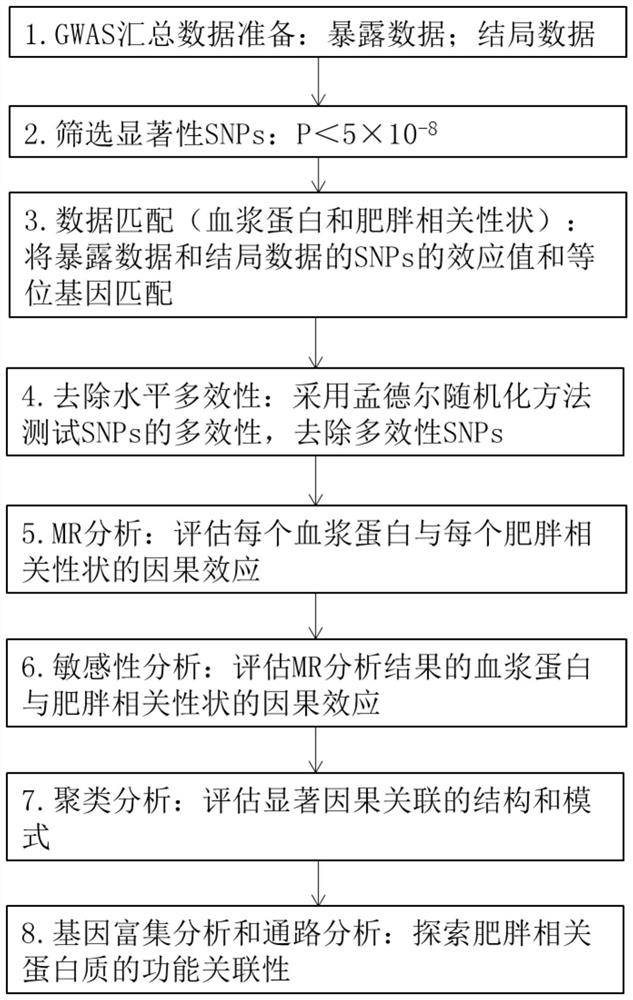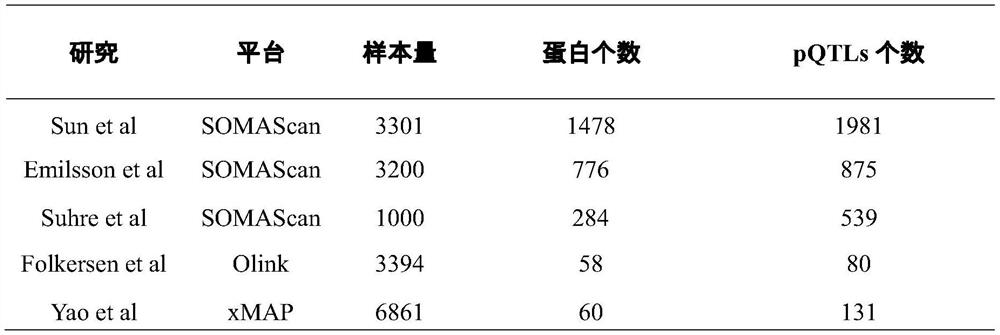Method for integrating and analyzing plasma proteome, genome and obesity related traits
A plasma protein and integrated analysis technology, applied in genomics, proteomics, instruments, etc., can solve the problems of small sample size, observational research is easily affected by confounding factors, and the impact of proteins cannot be fully evaluated
- Summary
- Abstract
- Description
- Claims
- Application Information
AI Technical Summary
Problems solved by technology
Method used
Image
Examples
Embodiment
[0033] Example A method for integrated analysis of plasma proteome, genome and obesity-related traits
[0034] refer to figure 1 In the flow chart shown, in order to describe the technical solution more specifically, the steps described in this embodiment do not strictly correspond to the steps described in the summary of the invention.
[0035] 1. GWAS summary data preparation
[0036] Sample selection:
[0037] (1) Plasma proteome samples: Plasma protein is used as an exposure factor, and the summary results of GWAS (genome-wide association study) of 5 pQTL (protein quantitative trait loci) from existing studies. The results of existing studies are available in the following literature: Sun, B.B., et al., Genomic atlas of the human plasma proteome. Nature, 2018.558(7708):p.73-79.doi:10.1038 / s41586-018-0175 -2. and Emilsson, V., etal., Co-regulatory networks of human serum proteins link genetics to disease. Science, 2018. 361(6404): p.769-773. doi: 10.1126 / science.aaq1327....
PUM
 Login to View More
Login to View More Abstract
Description
Claims
Application Information
 Login to View More
Login to View More - R&D
- Intellectual Property
- Life Sciences
- Materials
- Tech Scout
- Unparalleled Data Quality
- Higher Quality Content
- 60% Fewer Hallucinations
Browse by: Latest US Patents, China's latest patents, Technical Efficacy Thesaurus, Application Domain, Technology Topic, Popular Technical Reports.
© 2025 PatSnap. All rights reserved.Legal|Privacy policy|Modern Slavery Act Transparency Statement|Sitemap|About US| Contact US: help@patsnap.com



